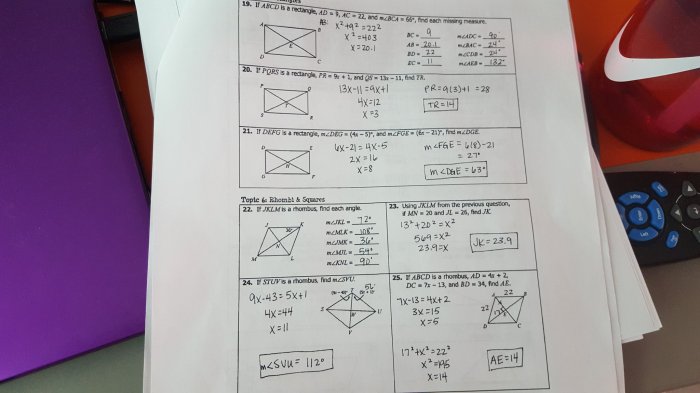Welcome to your comprehensive doubles and triples study guide! Dive into the fascinating world of mathematical equations, where doubles and triples play a crucial role. From everyday calculations to complex engineering problems, these operations are essential tools that can unlock the secrets of numbers.
Throughout this guide, we’ll explore the concepts, methods, and applications of doubles and triples, empowering you to tackle any mathematical challenge with confidence.
Definition and Overview

In mathematical equations, doubles and triples represent the operations of multiplying a number by 2 or 3, respectively. These operations are fundamental in various fields, including algebra, calculus, physics, and finance.
Doubles are often used to represent doubling the value of a variable or quantity. For example, in the equation 2x, the double operation multiplies the variable x by 2. Triples, on the other hand, represent multiplying a value by 3. In the equation 3y, the triple operation multiplies the variable y by 3.
Significance and Applications
Doubles and triples play a crucial role in solving equations and simplifying expressions. They are also essential in modeling real-world scenarios, such as population growth, radioactive decay, and financial transactions.
In population growth models, doubles represent the doubling of the population over a specific period. In radioactive decay models, triples represent the reduction of the radioactive substance to one-third of its original amount over a specific time interval.
Methods for Solving Doubles and Triples: Doubles And Triples Study Guide

Solving equations involving doubles and triples requires understanding their relationship and applying specific methods.
Step-by-Step Methods, Doubles and triples study guide
Method 1: Substitution
- Substitute one variable with a multiple of the other.
- Solve for the remaining variable.
Method 2: Elimination
- Multiply one or both equations by a factor to eliminate one variable.
- Solve the resulting equation for the other variable.
Method 3: System of Equations
- Set up a system of equations using the given relationships.
- Solve the system using substitution or elimination.
Example Table
| Equation | Method | Solution ||—|—|—|| 2x + y = 10 | Substitution | x = 5, y = 0 || 3x
2y = 8 | Elimination | x = 4, y = 2 |
| x + 2y = 7 x
For those who are struggling with the doubles and triples study guide, unit 7 lesson 2 joshua’s law might be a useful resource to supplement your understanding. The concepts explored in this lesson can help you grasp the intricacies of doubles and triples, making your study guide more manageable.
y = 3 | System of Equations | x = 5, y = 1 |
Simplifying Complex Equations
* Factor out common factors.
- Use the distributive property to expand terms.
- Group like terms together.
- Solve for one variable at a time.
Applications in Real-Life Situations
Doubles and triples find widespread application in various aspects of our daily lives, aiding in calculations and estimations. These operations play a crucial role in fields such as finance, engineering, and science, simplifying complex computations and facilitating decision-making.
Practical Scenarios
- Grocery Shopping:When purchasing items in bulk, doubling or tripling the price of a single unit helps estimate the total cost quickly.
- Cooking:Recipes often require doubling or tripling ingredients to adjust serving sizes or cater to larger gatherings.
- Construction:Engineers use doubles and triples to calculate material quantities and dimensions, ensuring accurate estimates for projects.
- Finance:Investors utilize doubles and triples to estimate potential returns on investments or calculate compound interest.
- Time Management:Doubling or tripling time estimates helps account for unexpected delays or buffer time for unforeseen circumstances.
Importance in Specialized Fields
- Finance:Compound interest calculations rely on doubling or tripling principal amounts over time, affecting investment returns significantly.
- Engineering:Structural analysis involves doubling or tripling loads to assess safety margins and ensure the integrity of structures.
- Science:Doubling or tripling concentrations in experiments helps determine the relationship between variables and optimize experimental conditions.
Challenges and Common Mistakes

Working with doubles and triples can pose some challenges for students. Here are a few common difficulties and tips for overcoming them:
One challenge is understanding the concept of doubles and triples. Doubles are numbers that are the same, while triples are numbers that are repeated three times. Students may confuse these concepts, so it’s important to clearly define them and provide examples.
Common Mistakes
- Confusing doubles and triples:Ensure students understand that doubles are pairs of identical numbers, while triples are groups of three identical numbers.
- Miscounting when finding doubles or triples:Guide students to count carefully and double-check their results to avoid errors.
- Incorrectly identifying doubles or triples:Provide ample practice and examples to help students recognize doubles and triples accurately.
Advanced Techniques

Solving complex doubles and triples equations requires advanced methods beyond basic arithmetic. These techniques employ algebraic principles, such as factoring and substitution, to simplify the solution process.
Factoring
Factoring involves expressing an equation as a product of simpler factors. For example, the equation 2x + 6 = 10 can be factored as 2(x + 3) = 10. By dividing both sides by 2, we obtain x + 3 = 5, which can be solved for x.
Substitution
Substitution involves replacing a variable in an equation with an equivalent expression. For instance, in the equation 3(x – 2) + 5 = 14, we can substitute y = x – 2. The equation then becomes 3y + 5 = 14, which can be solved for y.
Once we have the value of y, we can substitute it back into the original equation to find x.
Question & Answer Hub
What exactly are doubles and triples?
Doubles and triples are mathematical operations that involve multiplying a number by 2 or 3, respectively.
How do I solve doubles and triples equations?
To solve doubles and triples equations, you can use various methods such as direct multiplication, inverse operations, or algebraic techniques like factoring and substitution.
Where are doubles and triples used in real life?
Doubles and triples have numerous applications in everyday life, from calculating discounts and interest rates to estimating quantities and making informed decisions.

